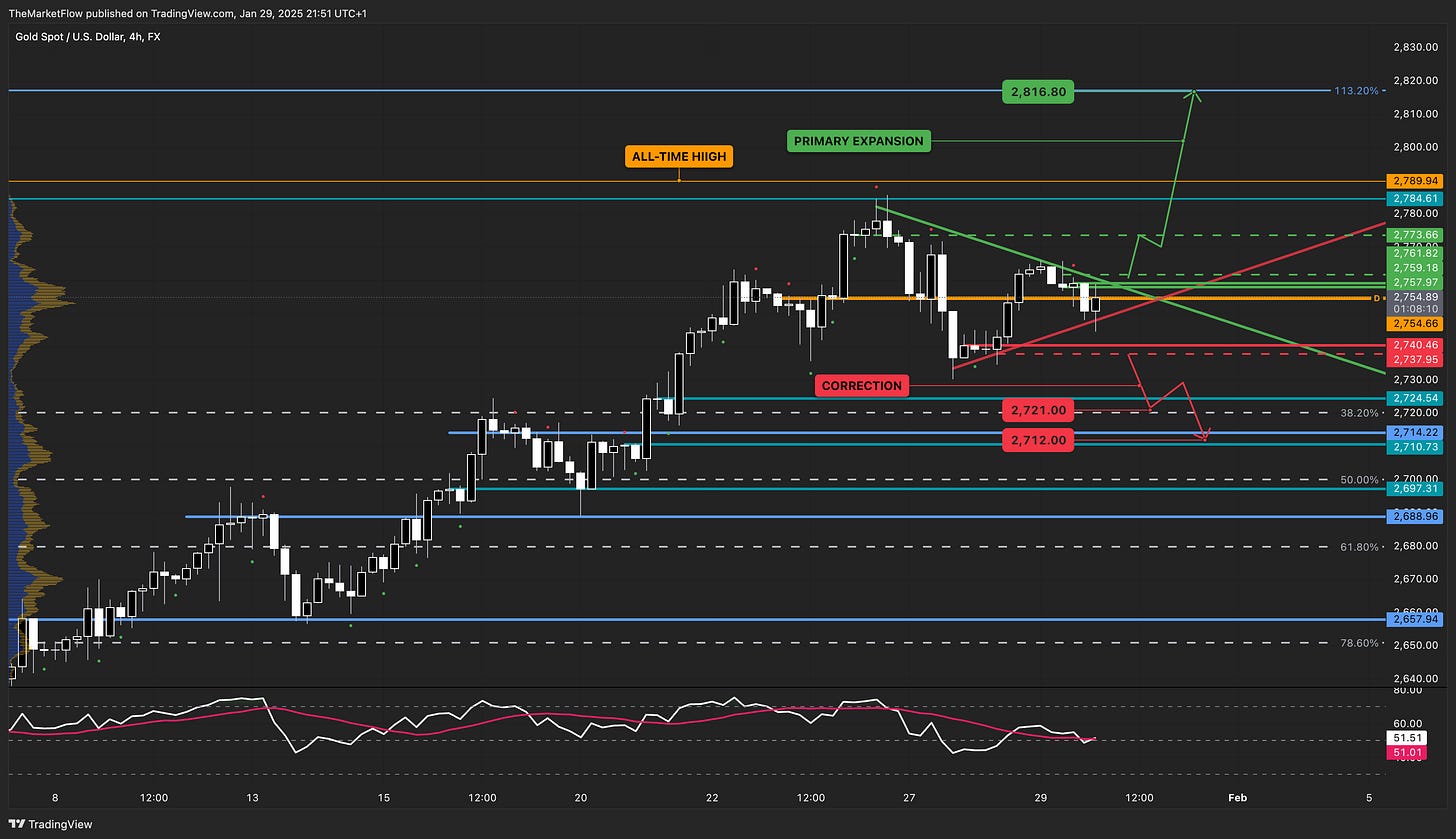Key Chart (H4)

The daily structure was broken 2 days ago, but the buyers immediately took control, and pushed the price back above the daily long impulse base.
This correction on H4 created a triangle that gives traders a chance to trade both directions.
Key Fundamentals
Summary
The gold market is currently experiencing significant activity, with prices holding steady as investors assess the Federal Reserve’s recent decision to maintain interest rates and its implications for economic policy. Additionally, substantial gold shipments from London to New York, driven by tariff concerns, have led to liquidity challenges in the London market. Despite these developments, gold continues to be viewed as a hedge against economic uncertainties.
Key Factors
Federal Reserve’s Recent Decision:
The Federal Reserve announced it would keep the federal funds rate unchanged at 4.25% to 4.5%, indicating a “wait and see” approach to future monetary policy adjustments. Fed Chair Jerome Powell emphasized that the central bank is in no rush to alter its policy stance, despite external pressures.
Market Dynamics:
Traders have transferred approximately $82 billion worth of gold from London to New York, anticipating potential tariffs. This movement has led to liquidity issues in the London market, causing delays of four to eight weeks for those trying to access their gold.
Supply and Demand:
The significant gold shipments to the U.S. have resulted in a shortage of bullion in London, as traders accumulate stock in New York due to tariff concerns. The waiting time to withdraw gold from the Bank of England’s vaults has increased from a few days to between four and eight weeks.
Central Bank Activity:
The London gold market is experiencing a surge in demand for borrowing gold from central banks following significant shipments to the United States. This surge is attributed to speculation of potential U.S. import tariffs.
Actionable Insights
Bullish Case:
Economic Uncertainty: If the Federal Reserve maintains its cautious stance and geopolitical tensions escalate, gold prices may rise as investors seek safe-haven assets.
Supply Constraints: The current liquidity issues in London could lead to higher premiums on physical gold, potentially driving up prices.
Bearish Case:
Interest Rate Decisions: Should the Federal Reserve adopt a more hawkish stance in the future, increasing interest rates, the opportunity cost of holding non-yielding assets like gold could rise, leading to potential price declines.
Trade Policy Resolutions: If concerns over tariffs diminish, the recent demand surge for physical gold in New York may wane, potentially easing current supply constraints and stabilizing prices.



